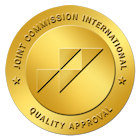Synthetic opioids are man-made drug cocktails produced for illegal recreational use. But what are synthetic opioids? The number of opioid overdoses in the country is rising and synthetic opioids have played a role in these statistics. There are drug rehabs in Portland that can help identify and treat opioid addiction. Crestview Recovery is one of the few rehabs in the area that is also fully licensed to provide inpatient mental health treatment. This is important since co-occurring mental health disorders often contribute to opioid abuse.
Types of Opioids
To better understand synthetic opioids, it’s important to understand that most opioids originate from some form of over-the-counter prescription. The following types of opioid-based prescriptions help provide a greater understanding of where their synthetic counterparts derive from.
Strictly utilized as an over-the-counter pain reliever, hydrocodone is a very strong neuronic suppressant for pain. This is one of the most commonly manipulated substances for synthetic drugs on the black market. What makes hydrocodone and most others on this list even more dangerous is how easily accessible this can be for prescription use.
Morphine is a strong sedative primarily utilized by physicians to remove patient’s pain for operational purposes. This is not as commonly used for synthetic use as others on this list due to its lack of over-the-counter access. Anybody with legal access to morphine requires access to medical storage or strictly approved prescriptions administered by a trained specialist. Its sedative properties and quick onset of effects make it a target for synthetic opioid production.
Fentanyl is the most dangerous and potent of the others on this list, being fifty times more potent than morphine on the low end. On a high end, it can be one hundred times more potent. Thus why it takes a very trace amount to induce a fatal overdose. In 2022, opioids, predominantly fentanyl, were responsible for over a staggering 76,000 deaths in the US alone. While recent years show a steady decline in fentanyl-related deaths, the number is still beyond startling. You can take action against these rising numbers by enrolling in fentanyl addiction treatment today.
Codeine is an extremely addictive opium-based drug prescribed only for individuals over the age of 18. Codeine-based opioid use is most often associated with breathing issues. However, it is important to note that the others on this list can also lead to breathing problems when done in excess. As a prescription, it is mostly prescribed in tablet form, but in synthetic cases, it is often melted down as an additive to heroin or other synthetics.
Heroin is commonly mixed, melted, or cut with many other drugs on this list to magnify potency and onset of effects. Like fentanyl, it takes a very small amount to overdose and is highly addictive. Many users have reported heroin addiction symptoms after even a single use. A nearly equal amount of people have also been reported to have overdosed. People who overdose on heroin often suffocate due to its suppressive effects on the respiratory system
What are Synthetic Opioids Made From?

Synthetic opioids are made by infusing natural opioids with other harmful chemicals to magnify potency for recreational use. Though the natural state of opioids comes from legal prescriptions, these synthetic infusions are concocted in a medical or makeshift lab. The finished product is a cocktail of these combined chemical variations distributed on the streets.
Why are Synthetic Opioids So Dangerous?
Synthetic opioids are widely known as one of the most dangerous drugs due to the staggering and ever-rising number of opioid-related deaths. Allow the following dangers to motivate you to refrain from opioid abuse and seek addiction help.
When synthetic opioids are made, it causes a drastic fluctuation of potency factors that are unknown even to the manufacturer. Either this or the specific strength of the product is not accurately disclosed to the user. While sellers can have a rough idea of potency, knowing precise dosage potency is very difficult to ascertain. This unknown potency magnifies overdose and death risks. This is especially potentially fatal considering that man-made potency always varies from batch to batch.
Many distributors attempt to get into the underground sales market for synthetic substances whether they’re qualified or not. It takes strict precision, knowledge, and experience to create synthetic opioids that can be distributed on the streets. If a distributor or synthesizer is inexperienced or unaware of the precision necessary for synthesizing, it becomes even more dangerous. Unfortunately, this occurs a lot in the underground drug trade, leading to the ever-rising number of overdoses and deaths.
Aside from unknown potency factors, the naturally elevated potency of synthetic drugs poses a danger in itself. While drugs like fentanyl and oxycodone are strong enough, synthetically enhanced products skyrocket any substance’s potency factor. Couple this with the fluctuations of individual tolerance levels and any dose can be a fatal dose.
Perhaps the only thing more harmful than synthetic opioids is fake synthetic opioids. Unfortunately, this is more common than people realize since all synthetic opioids are man-made in some form of lab. These falsely manufactured synthetics are often filled with laundry detergent, starch, metals, and other harmful chemicals that can cause serious damage. This includes potentially fatal outcomes.
All of the previously mentioned points have one thing in common: they all lead to potential overdose and death. Overdose and death remain pressing concerns as the number of opioid-related fatalities continues to rise. These incidents often stem from addiction disorders and increased tolerance levels. The reality is that every use of synthetic opioids carries the risk of overdose and fatality. Seeking help today can prevent you from becoming part of the growing statistics of addiction-related deaths.
Due to the commonality of man-made opioids being injected, these injections can lead to permanent vein damage and artery defects. This can be caused by a variety of factors, including injection frequency, poor entry points, and drug effects on vein health. Consequently, these tools on veins can trickle down into more serious health conditions if left untreated.
What are the Signs of Synthetic Opioid Use?
Opioid abuse comes in several behavioral and physical manifestations that are very apparent. If you or a loved one are demonstrating any of the following signs of opioid abuse symptoms, take action now.
As mentioned earlier, synthetic opioids are commonly injected. Therefore, injection sites will be visually apparent through bruises and scars on the arms or legs of the injection point. Scars and scabs will especially be apparent if an individual is a long-term user. Needle-induced scars are easily distinguishable from other scars as these scars will be near surrounding veins or will show bruising on the vein itself.
Opioid’s stimulating effects on dopamine have the opposite effect on stress and anxiety levels after the fact. Therefore, anybody with an opioid addiction may exhibit signs of unfounded anxiety, stress, or even paranoid delusions. This is especially more pronounced if withdrawal symptoms have begun to set in. These anxiety strains, in turn, can take a deeper toll on your mind, body, and relationships. If the aforementioned symptom describes you, we’re here to help.
Another behavioral manifestation of opioid use is increased agitation. This quick-tempered trait is a direct result of the destabilizing effects of opioids on neuronal function. These reactions will most often be in response to circumstances that are minor or otherwise not angering. If a loved one is expressing any unnatural irritability towards seemingly minor things, it may be time to seek professional help. Our compassionate team is yearning to serve you and your family’s rehab needs.
Despite its sedative effects, opioid withdrawals have adverse effects on sleep. This can inflict night tremors, difficulty falling asleep, or difficulty staying asleep. These disrupted sleep patterns can lead to serious insomnia effects by keeping you awake for extended periods until your next use. Insomnia, one of the many uncomfortable opioid withdrawal symptoms, is why quality medical detox is necessary to overcome these difficult addictions.
Most drugs dilate pupils to some degree. Opioid-based drug abuse, however, takes dilated pupils even further. Those who are under the influence are often characterized by small pupils amid bloodshot retinas. Individuals experiencing an overdose are described as having “pinpoint” pupils. If you witness any visual characteristics only describable as pinpoint pupils, contact the appropriate authorities to get immediate medical help.
Crestview Recovery is Your Opportunity at a Happier Life

At Crestview Recovery, we pride ourselves on going the extra mile for your rehab to help you achieve a happier sober life. The moment you reach out to us, you’ll already feel the joy, comfort, and motivation rehab has to offer. We will help you discover the new, happier, and complete you. Begin the joys of recovery and take action against your strongholds by contacting us today.
































